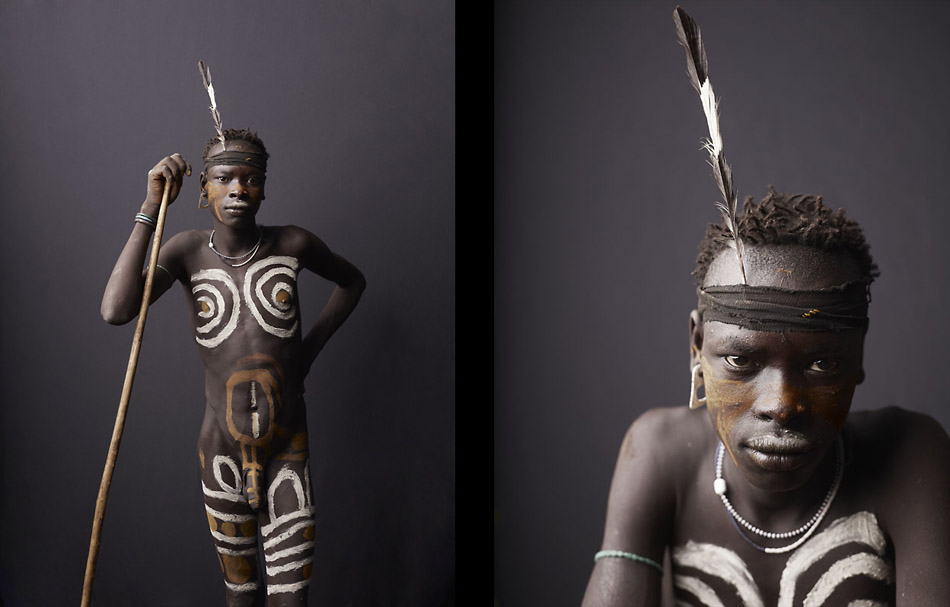
My blog sure sees a lot of posts from me about Ethiopia's Lower Omo Valley. These people have fascinated me for years now. It's only normal I feel the need to share so many images from my time spent with these incredible people.
I have not published these photographs on my blog before, but I took them on the same Nov / December 2009 trip in Ethiopia that I’ve posted about before. You can read all about that trip here.
Before this stream of photographs, all my pictures have been of the subjects within their environment, but you’ll notice all these are on a simple black background. I am currently working on a fine art book of this entire series encompassing all my work from the Omo Valley and felt it needed a little breathing room at the end. I am just in the early stages now, and as you can imagine it’s a daunting task putting everything together. Although that will take a long time, my work from this series will also be displayed very soon Los Angeles at Photola this January 15th. This link has information about a meet and greet that day, so please come by and say hello! (Painfully, they put a picture of Edward Cullen on info page… I can assure you there will be no Twilight pictures on display, but I guess that’s LA for you.)
Oh right, back to Ethiopia- the tribes look so interesting that sometimes you don’t even need to depict the in their environment. The way they present themselves can say a lot about them if you know how to read it. Each tribe of the Omo valley has a specific way of dressing and decorating themselves as a way to visually associate themselves with their unique customs and values. Since there are so many tribes occupying spaces close to one another, the need for visual differences to separate one from another is strong.
For example, at puberty some women start applying a deep red clay to their skin and hair to mark them as part of the Hamer tribe. The iron rings around the neck represent they may be a first or second wife. Scarification on a man depicts taking another’s life in tribal war, but for a woman it means she has created a new one- a sign of motherhood.
Mursi headdresses are made out of bird feathers. It is both a decoration and an object intimidation for neighboring enemies. The Mursi are considered some of the most feared warriors in the Omo Valley.
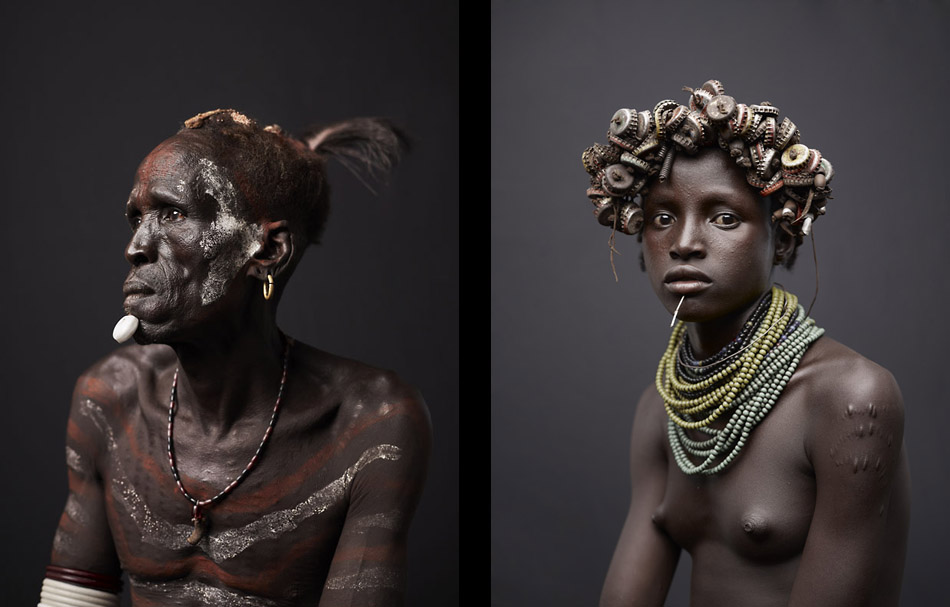
The Karo are considered one of the Omo Valley’s most endangered ethnic group with an estimated population of only 1500 remaining. As an elder of the Karo tribe, Biwa (left panel) is respected and well adorned as a warrior, carrying rows of scarification representing the enemies he killed in battle. Biwa fought the Mursi and expelled them from the land his tribe now occupies.
The Daasanach (right panel) are a semi-nomadic tribe numbering approximately 50,000. Their clans stretch across Sudan, Kenya and Southern Ethiopia. Politically, the Daasanach do not feel they belong to either country and prefer to self- govern by their own customs and interpretation of land borders. In the past, the tribe was able to roam place to place more freely as pastorialists, but in recent times there is also a dependence on agriculture. Like many tribes of the Omo Valley, the Daasanach depend on the annual flood cycle of the Omo River to nurture their crops. Their dress resembles that of a Daasanach hut- created from collected scraps and objects traded with other tribes and villages, then turned into a work of art.

The Hamer (right panel) have a belief in spirits are which are assigned to physical objects on Earth. They observe the interconnectedness of both living things and inanimate objects. When asked about their religion, most will reply they don’t have one. They don’t have a specific name for their belief system, it is viewed simply as a way of life.
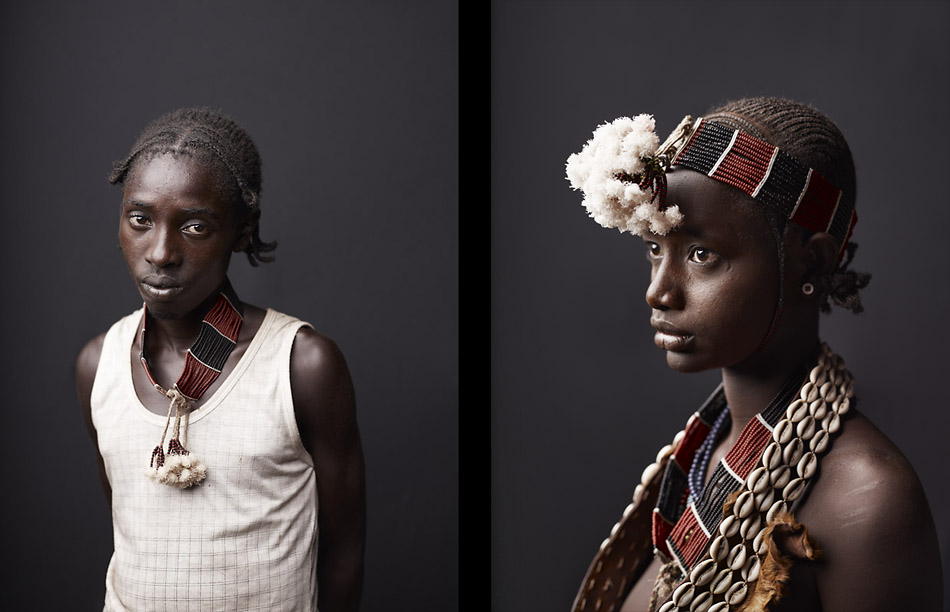
(Mashi Algo and Dina Alada of the Hamer.) The Hamer make their clothing out of reused goat skin, stretched and dried in the sun. In recent times, western clothing is becoming popular as well as beaded decorations woven into the fabric.
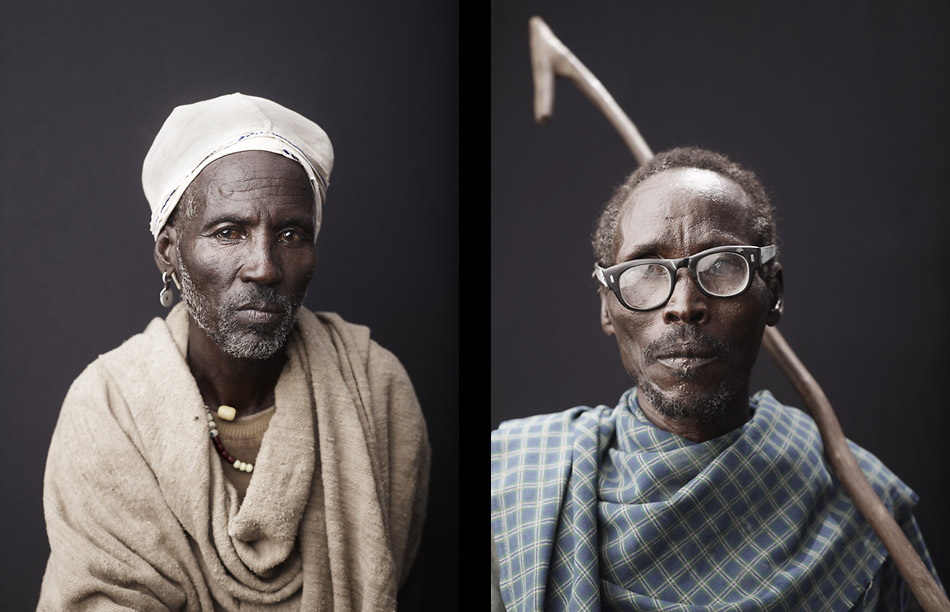
After an armed conflict, the elders of the Arbore will bury the spear heads and weaponry used in battle in order to curse the notion of war.
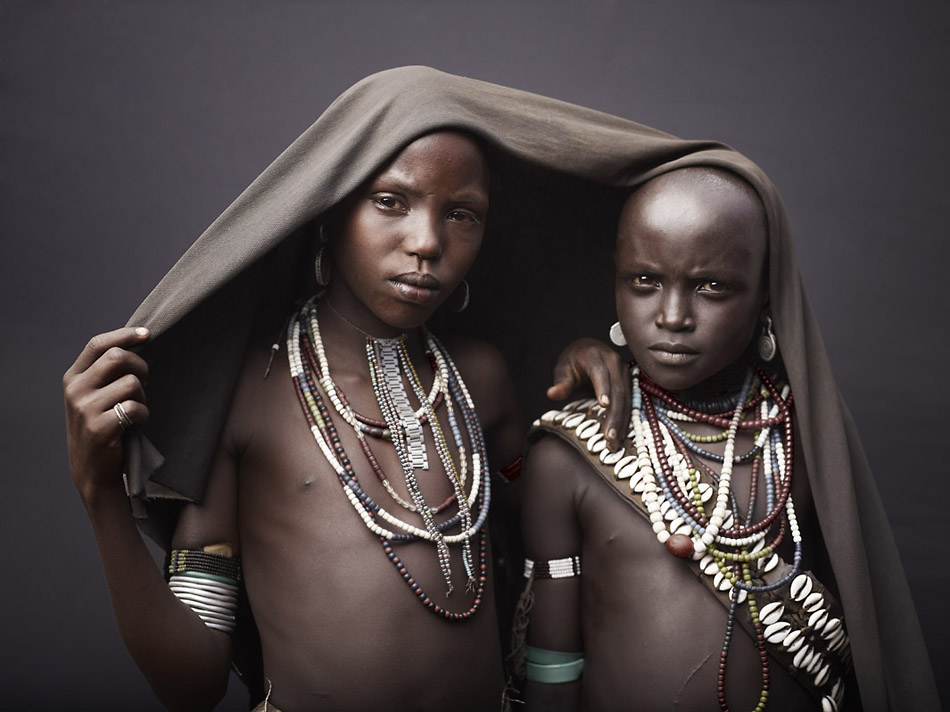
Arbore women are well know for their long headdresses. The girls shave their heads to indicate virginity, and only start growing hair after marriage.
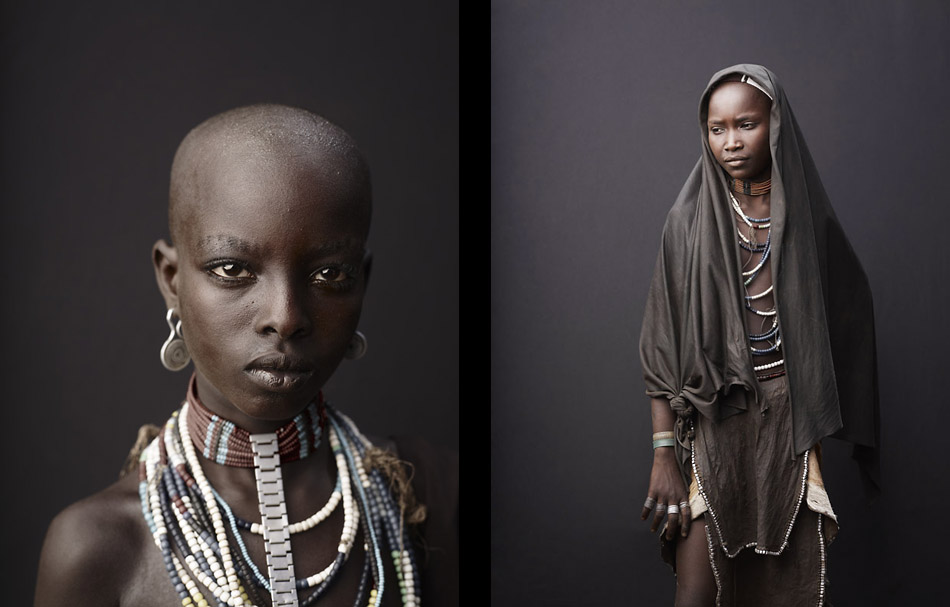
After the introduction of missionaries into the Omo Valley the Arbore now share a mixture of monotheistic and traditional animist beliefs
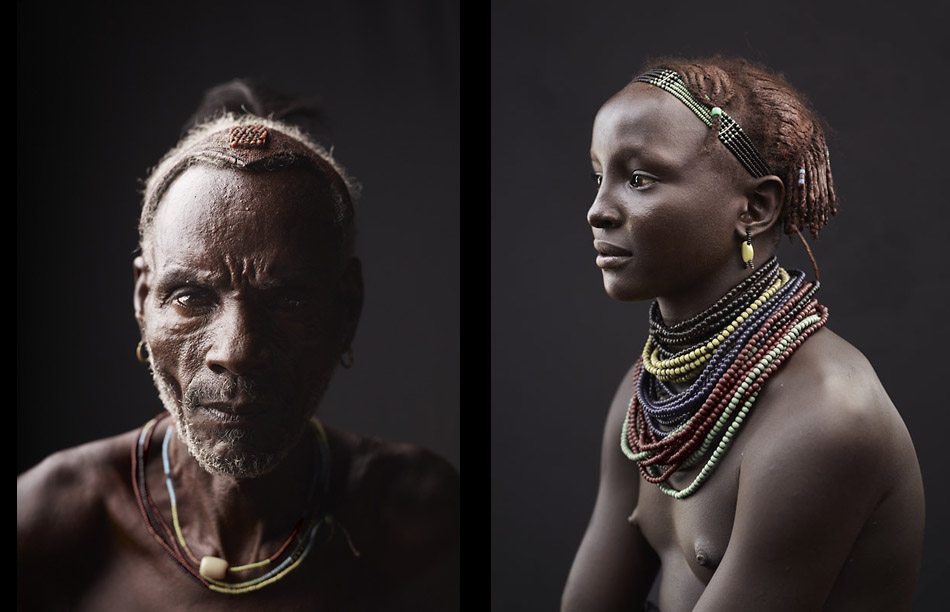
Study of Dula Bulunka, Hamer tribe (left panel)

The Karo tribe lives on the Western side of the Omo River. The Nyangatom live on the other side, a tribe that has raided Karo land many times in the past.
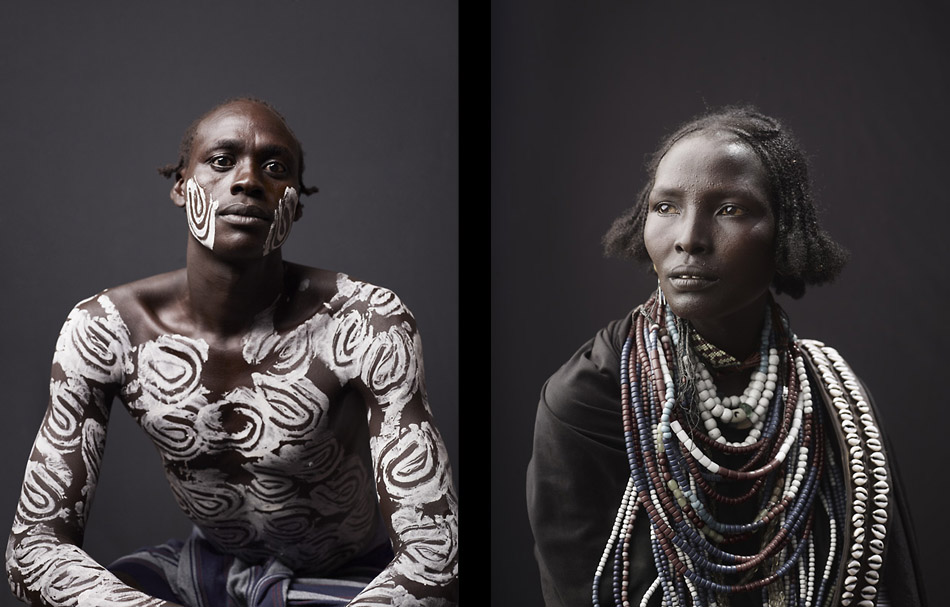
As usual, I used my normal camera and one light setup.
The light is created from a modest Profoto 7B 1200 battery pack with an Elinchrom Octa as it’s modifier.
The camera was a Phase One / Mamiya 645 camera with a 80 mm prime phase one lens.
It’s hard to bring a lot of gear when photographing in such a remote area (most people think I’m crazy already) so my kit is kept to a minimum. The black background is a big collapsable reflector that folds up nice and small. Usually I’d use foam core for something like this, but it would be ridiculous to try and drag it around the south of Ethiopia.

These images were often taken at night, so that no natural light could interfere and mix with the gradient of studio light on the background. However, sometimes the natural light worked well. In this picture you can see the light bouncing off the Omo River give a wrapping effect on the subject. In cases like this, the studio light is used only to flash and create a simple reflection in the eye of the subject.
I often look back at these images and wonder what else I would have taken if I was able to stay longer on my last trip. Although I feel like this marks the end of my Lower Omo Valley series, a piece of me will always want to go back and photograph more. No matter where I go, I always want to spend more time learning and traveling within the area. In fact, I know I will… but it appears as usual I am planning a Part 2 before Part 1 is finished. Hope to see you at Photola this year.
JL
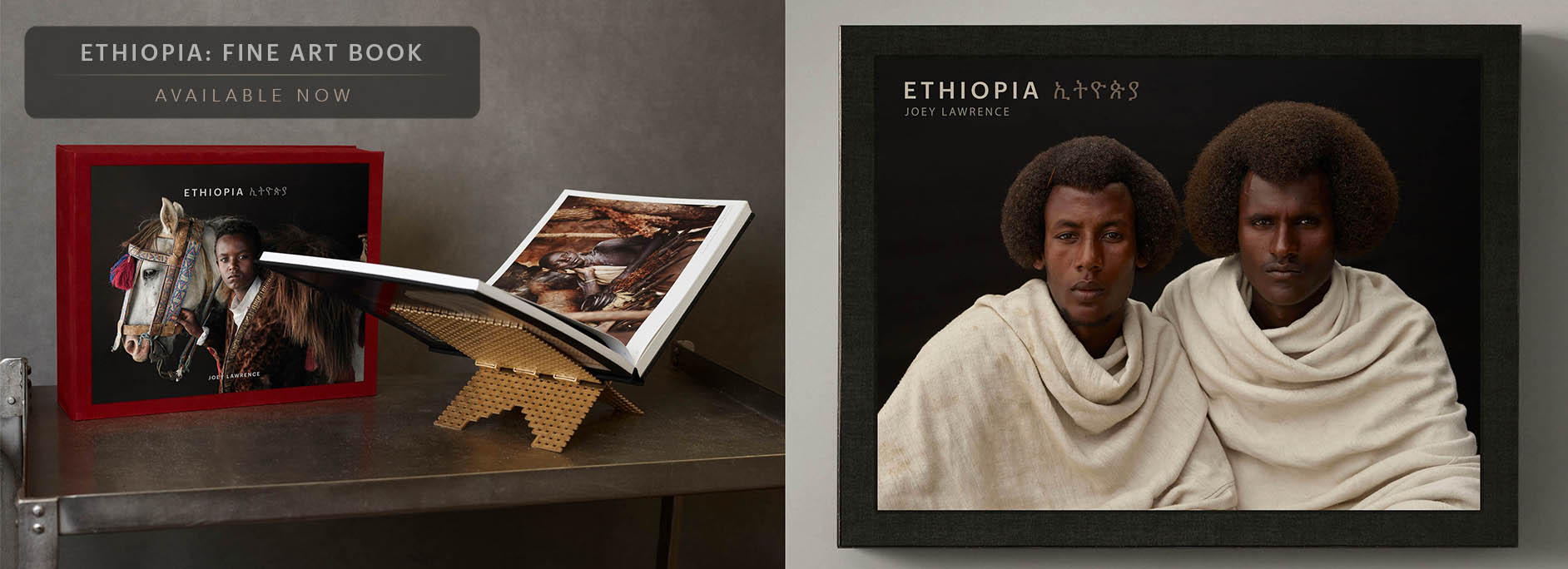
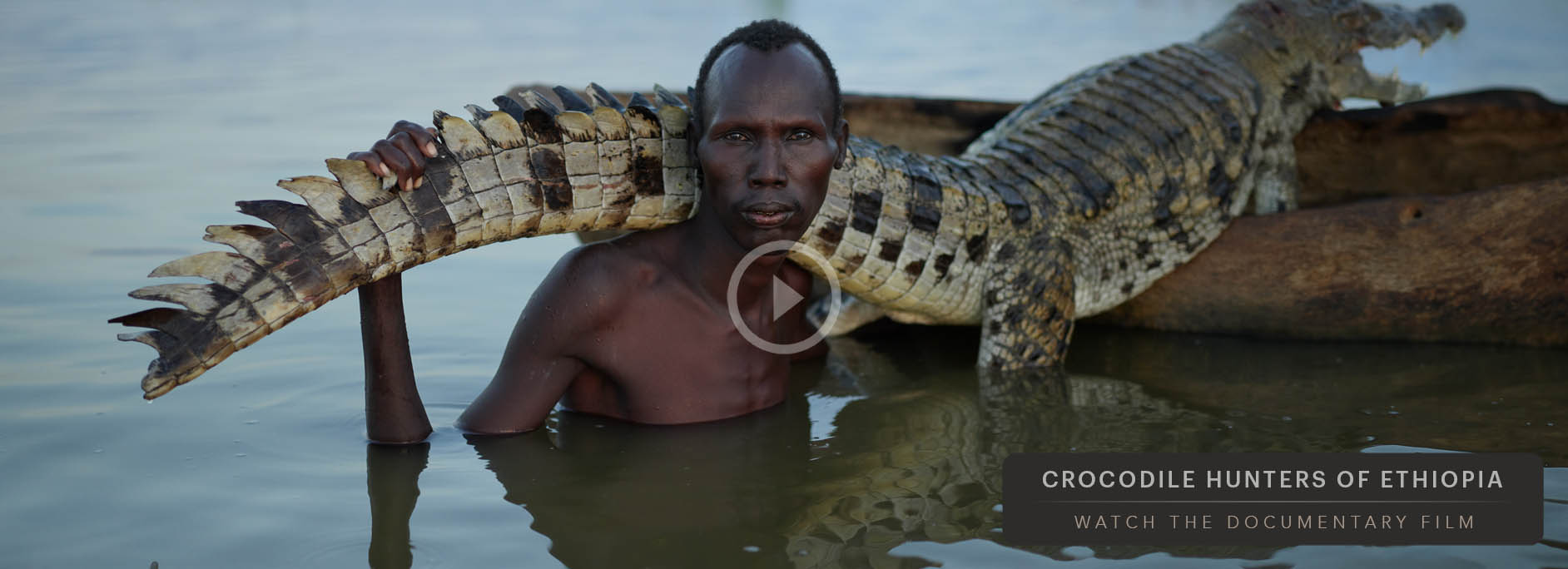
ADD A COMMENT (0)
Your comment has been posted